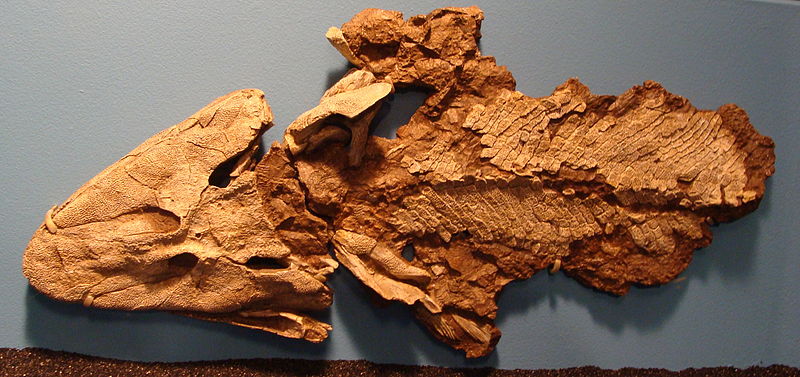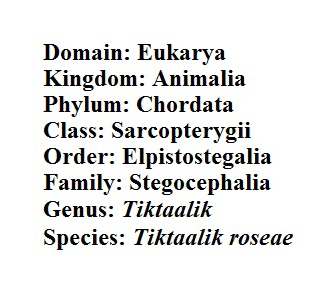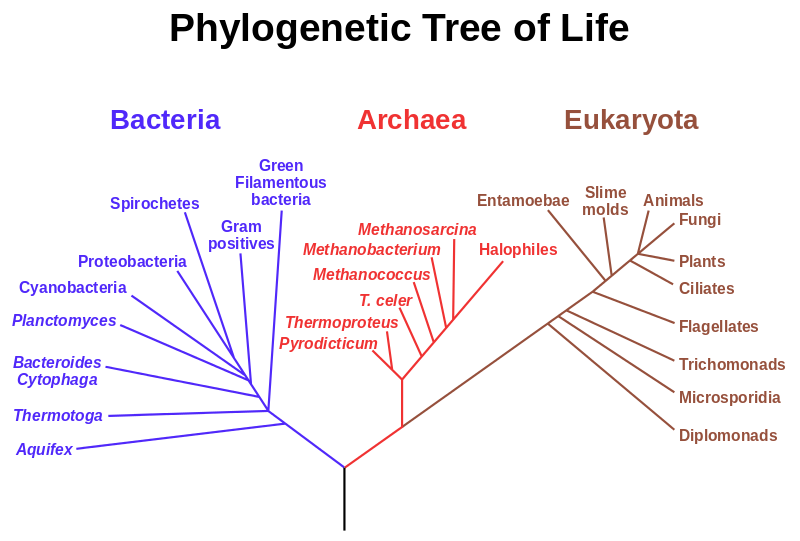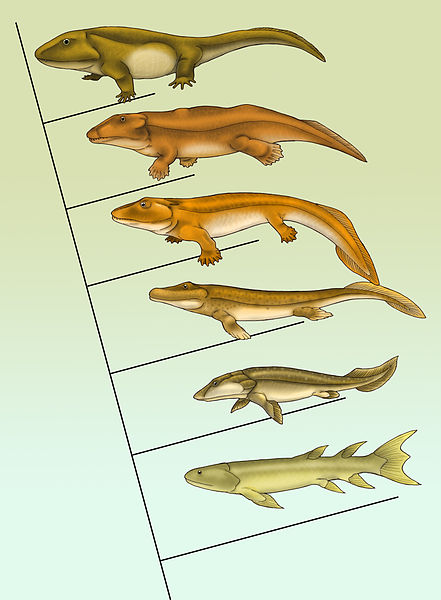How is Tiktaalik roseae classified?
Domain: Eukarya
Domain Eukarya is very diverse, containing both multicellular and unicellular organisms (Campbell et al., 2008). The cells of organisms in this domain have true nuclei, have membrane bound organelles, and are larger than prokaryotic cells (Campbell et al., 2008).
This tree is based on RNA data and was proposed by Carl Woese. There are three domains in the tree of life, including bacteria, archaea, and eukaryota. Tiktaalik is a member of this domain because it was a multicellular organism and had cells with nuclei. Other organisms included in this very diverse domain are plants, such as Saffron and Pineapples , fungi, such as the Giant Puffball and Reishi, and animals.
Kingdom: Animalia
The Animalia Kingdom is characterized by organisms that are multicellular, are heterotrophic, and reproduce sexually (Campbell et al., 2008). Tiktaalik is classified in this kingdom because it was multicellular, heterotrophic, and most likely reproduced through sexual reproduction. Other members of the Animalia Kingdom include the Magician’s Cone Snail, the Atlantic Horseshoe Crab, and the Bamboo Pit Viper.
Phylum: Chordata
Chordata possess several unique characteristics, including bilateral symmetry, a notochord, and a post anal tail (Campbell et al., 2008). Tiktaalik is classified along this line because it has bilateral symmetry, likely had a notochord, and a strong posterior tail that would have assisted it in swimming. Other chordates include organisms such as the Southeastern Pygmy Rattlesnake, the Japanese Puffer Fish, and the Domestic Dog.
Class: Sarcopterygii
This class is composed primarly of two groups of organisms: lobed-finned fish and tetrapods (UCMP, 2006). Sarcopterygii are characterized by having a heterocercal tail, meaning it was asymmetrical, and lobed-shaped fins (UCMP, 2006). Tiktaalik is classified in this class because it possessed a heterocercal tail and had a lobed-shaped fin, which would have allowed it to prop itself up on a substrate.
Order: Elpistostegalia
Elpistostegalia have many defining characteristics, including loss of anterior dorsal fins, dorsal eyes on a flattened skull, a long snout, and a flattened body (Daeschler et al., 2006). Tiktaalik shared a couple of these characteristics, such as dorsal eyes that would have allowed it to see above the water, and no anterior dorsal fins.
Family: Stegocephalia
Stegocephalia characteristics include loss of some bones in the head, loss of a gill cover, four limbs, and a rib connecting the spine and hip (Tree of Life, 2011). Tiktaalik had no gill cover, had four limbs, and had ribs capable of supporting its body weight. Other species in this family include Ichthyostega and Acanthostega.
Genus: Tiktaalik
Tiktaalik is characterized by forelimbs capable of supporting weight, eyes positioned atop the head, and a neck that is able to move independently.
Species: Tiktaalik roseae
The only species currently listed under the genus Tiktaalik is Tiktaalik roseae, which was found in Nunavut, Canada. The name Tiktaalik in the Inuktitut language means "burbot", which translates to “large, freshwater fish” in English (Daeschler et al., 2006).
This tree is based on morphological data.
From bottom to top, the organisms are Eusthenopteron,
Panderichthys, Tiktaalik roseae, Acanthostega, Ichthyostega,
and Pederpes. Tiktaalik has a phylogenetic
position between Panderichthys and Acanthostega.
Acanthostega retained a fin ray, but had digits that were
capable of bearing the weight of it (Ahlberg and Clack, 2006).
Panderichthys was a transitional fish with a pectoral fin and
skeleton that was beginning to suggest the organism may have been
beginning to walk in the shallows. Tiktaalik had fin rays
without digits, but the fins were able to prop the animal up on a
substrate (Ahlberg and Clack, 2006).
Click on any of the links below to visit more websites and learn about these organisms!




